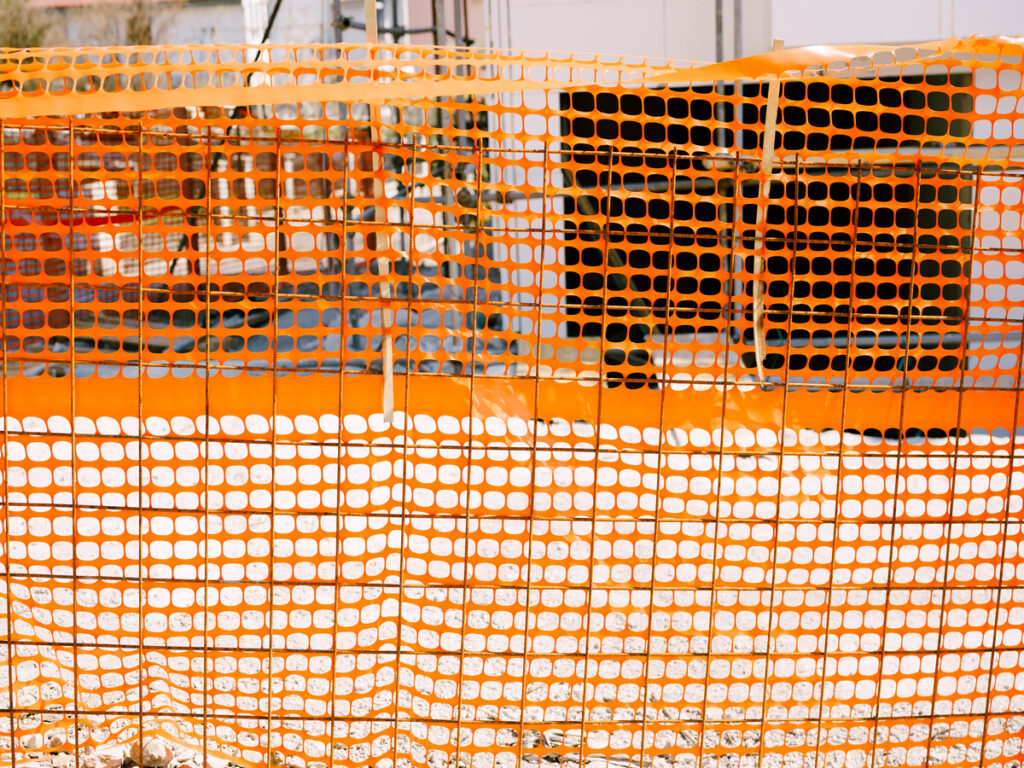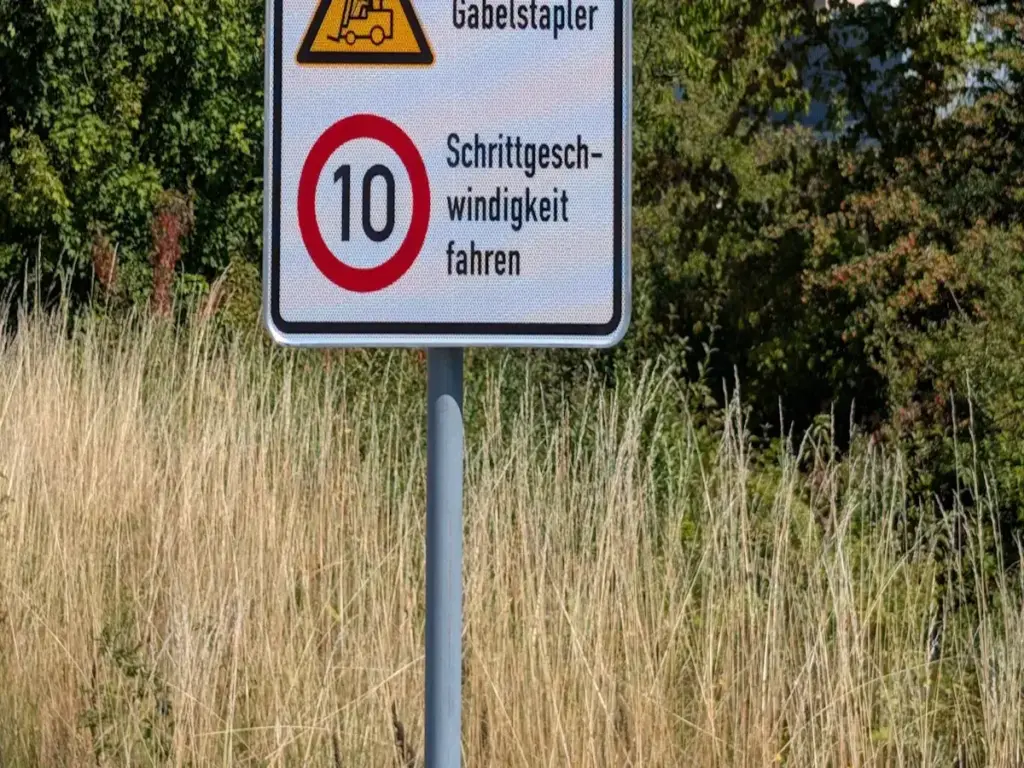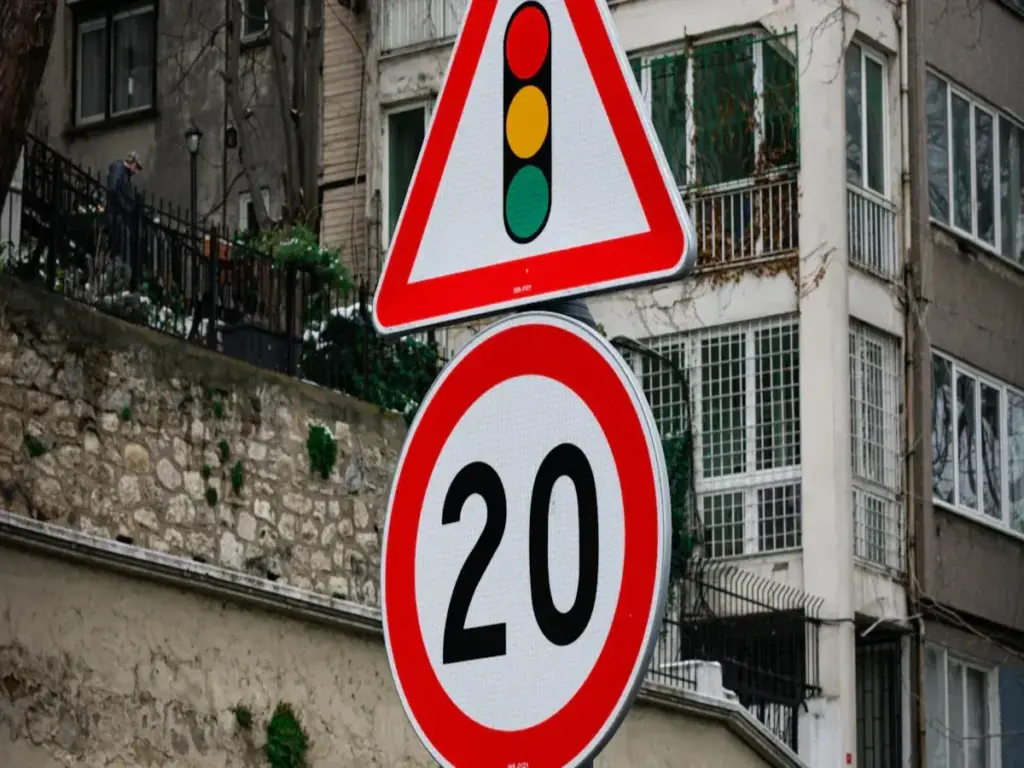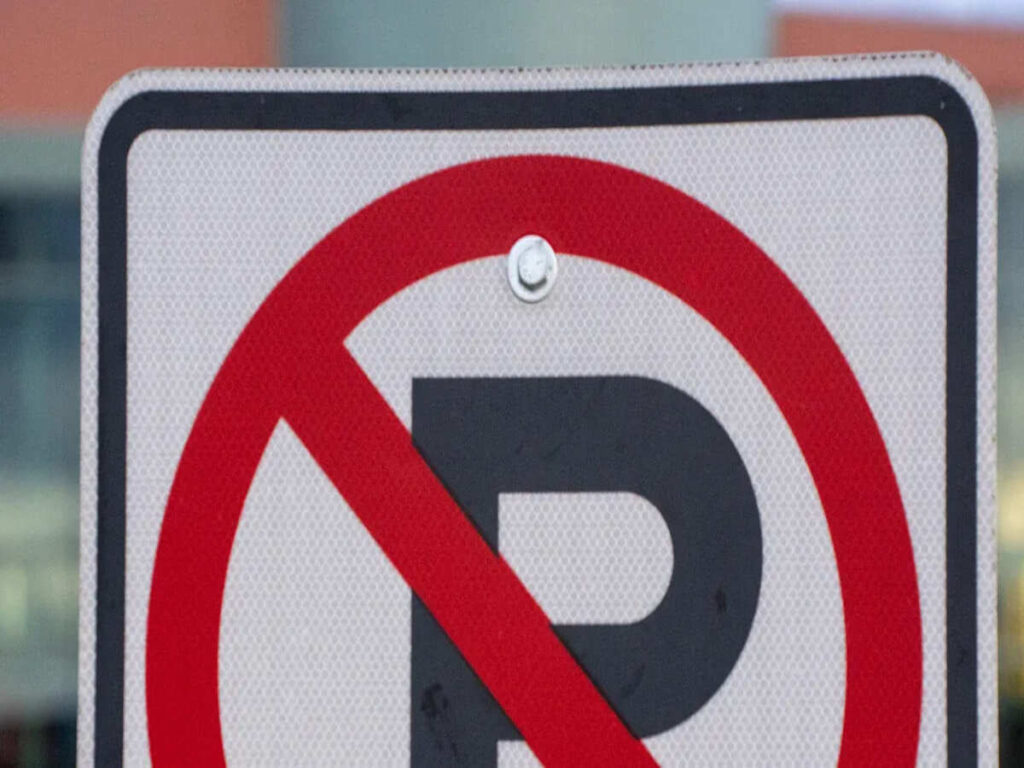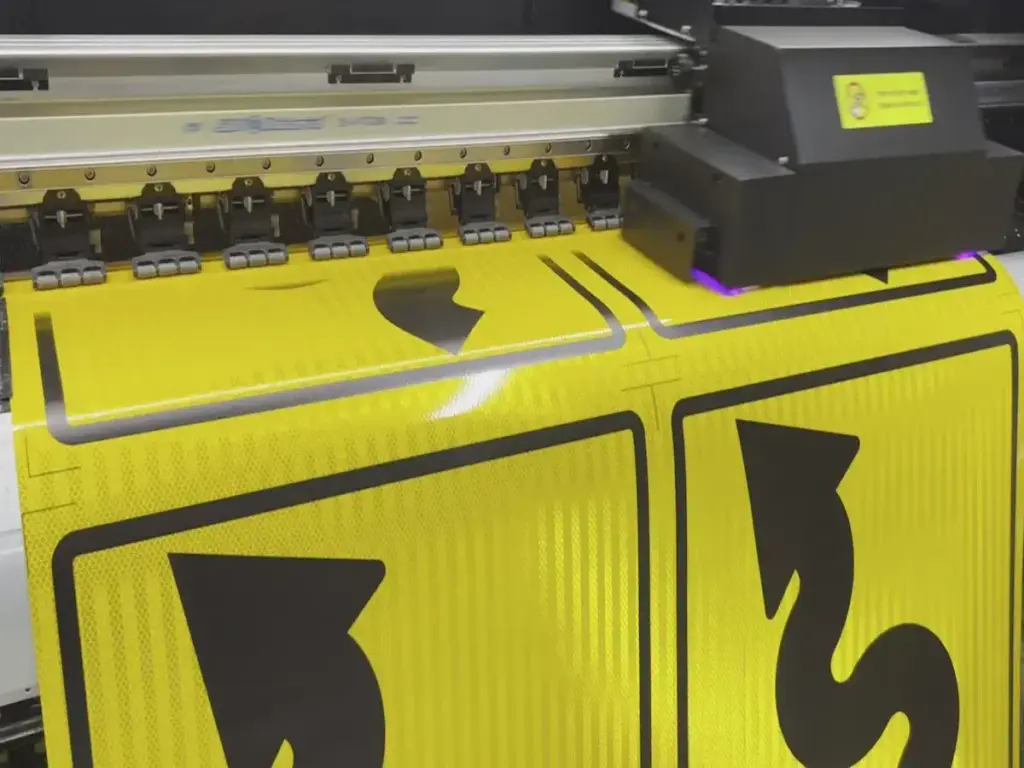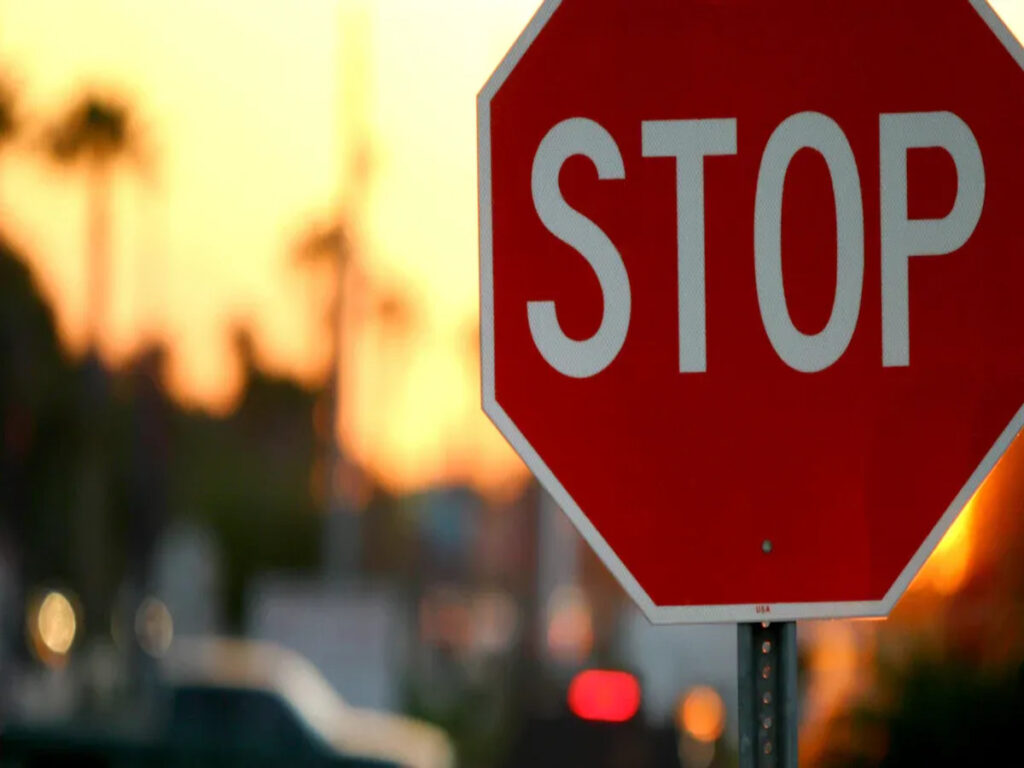
لماذا هي علامات توقف حركة المرور حمراء الآن وليست صفراء? The change was made to keep roads safer and to help drivers see the traffic stop signs more clearly. Red is easy to notice, حتى في الليل, making it an ideal color for these critical signs. Advances in materials made colors brighter and less likely to fade over time.
في أوبترافيك, we use high-durability coatings to manufacture توقف العلامات that meet modern safety standards and remain vivid for years. Because when it comes to safety, visibility is everything.
Yellow Stop Signs
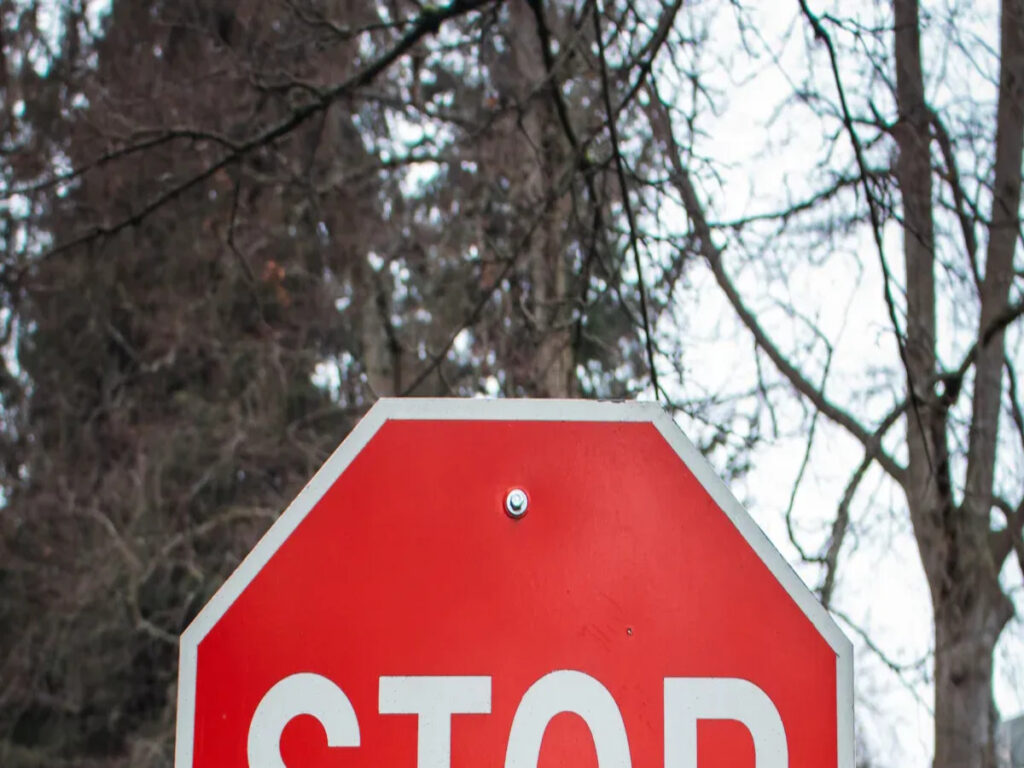
Early Use and Purpose
في أوائل القرن العشرين, cities started using traffic stop signs. This helped control more cars on the roads. The first stop signs were put up in Detroit in 1915. في البداية, these signs had many colors and shapes. This made drivers confused. بحلول أواخر العشرينيات من القرن الماضي, officials picked yellow as the main color for stop signs. Yellow was easy to see during the day and at night. This was before reflective materials were invented. ال American Association of Highway Officials agreed with this choice. ال National Conference on Street و سلامة الطرق السريعة also supported it. ال دليل على أجهزة مراقبة حركة المرور الموحدة said stop signs should be octagonal. They needed black or red letters on a yellow background. This design helped people see and know stop signs. It made roads safer for everyone.
ملحوظة: Yellow was picked because it was easy to see. This was important before glass-bead retroreflectorization made red signs brighter at night.
Limitations and Challenges
Even though yellow was bright, yellow stop signs had problems. Yellow usually means caution, not stop. Many drivers felt unsure because yellow did not mean stop. Studies show people think red means danger or stop. Yellow means slow down or be careful. This made yellow less useful for stop signs. متأخر , بعد فوات الوقت, experts saw drivers did not always stop at yellow signs. Research showed red stop signs worked better. Red signs made drivers stop more and kept roads safer. People wanted a clearer message and better signs. This led to changing stop signs from yellow to red.
Color Change in 1954
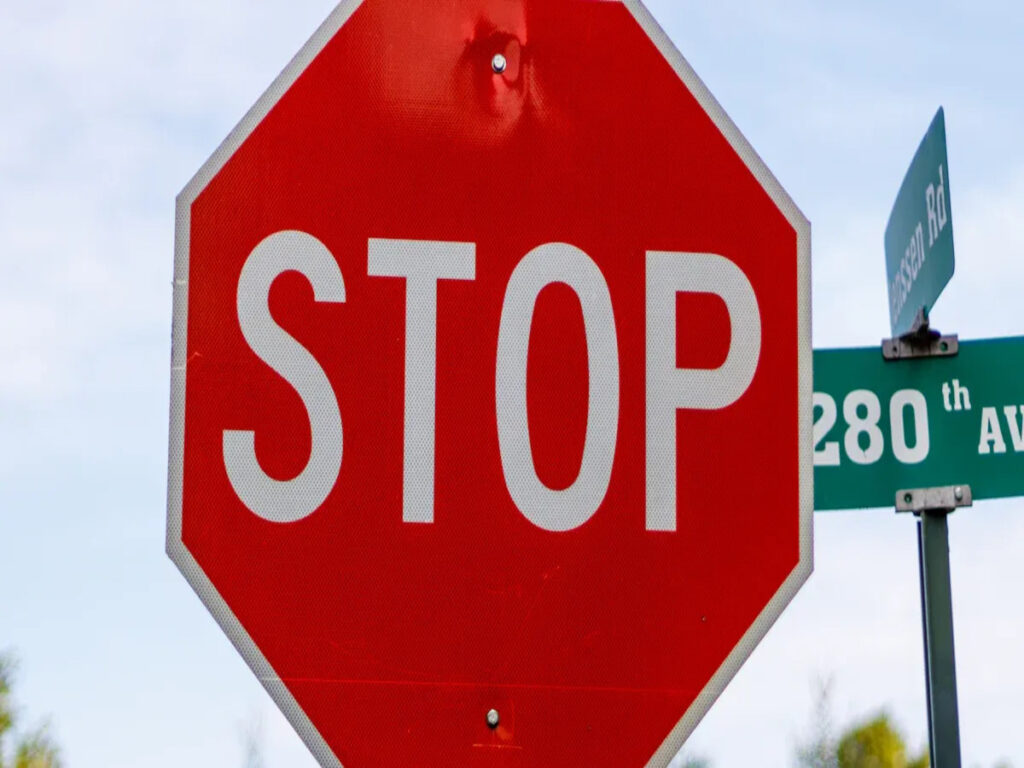
Why Red Was Chosen
In the early 1950s, experts wanted to make traffic stop signs easier to see and understand. Red stands out more than yellow, خاصة في الإضاءة المنخفضة أو في الليل. Scientists found that red light travels farther and catches the eye quickly. People also connect the color red with danger and stopping. This makes red the best choice for a sign that tells drivers to stop right away.
قبل 1954, red paint faded quickly in the sun and rain. New fade-resistant materials changed this. These new finishes kept the red color bright for a long time. They also made the signs easier to see at night when car headlights shine on them. With these improvements, red became the clear choice for stop signs.
ملحوظة: Red helps drivers recognize the need to stop, even from a distance or in bad weather.
The MUTCD Standard
في 1954, ال دليل على أجهزة مراقبة حركة المرور الموحدة (Mutcd) made a big change. The MUTCD required all stop signs to have white letters on a red background. This rule replaced the old yellow signs. The new standard also removed extra messages from stop signs and introduced the YIELD sign for less dangerous intersections. These changes helped make traffic stop signs more clear and easy to follow.
California started using red stop signs before the rest of the country. Other states soon followed. The new rule helped create a single look for stop signs across the United States. This made it easier for drivers to know what to do, no matter where they drove. ال 1954 MUTCD update marked a big step toward making roads safer and more organized.
The move to red stop signs was part of a larger effort to standardize traffic signs. This helped drivers recognize important signs quickly and reduced confusion on the road.
Standardization of Traffic Stop Signs
National and International Efforts
Groups like the American Association of State Highway Officials and the Manual on Uniform Traffic Control Devices started making rules for stop signs. They decided how big the signs should be, what shape they should have, what color to use, and where to put them. Their main goal was to help drivers know important signs right away, no matter where they drove in the country. قريباً, other countries wanted to do the same thing. The Vienna Convention on Road Signs and Signals helped many countries agree on rules for road signs. This agreement set rules for shapes, الألوان, and symbols on signs, بما في ذلك علامات التوقف. Most countries now use red for stop or prohibition. This helps drivers from different places understand the signs. Some countries still have small differences in their symbols. Studies show that using the same shapes and colors helps drivers follow traffic rules, even when they visit new places.
ملحوظة: Standardized signs make roads safer for everyone, especially as more people travel between countries.
Shape and Color Consistency
Stop signs are octagonal and red. This makes them easy to see and different from other signs. Experts picked the octagon because it stands out and is easy to spot, even far away or in bad weather. The red color means danger or stop, which most people already know. Research shows drivers notice and understand red octagonal stop signs faster than other types. The Vienna Convention and the Manual on Uniform Traffic Control Devices both say stop signs must look this way. Studies show that familiar shapes and colors help drivers remember what each sign means. هذا يجعل الطرق أكثر أمانًا وأقل مربكًا.
| ميزة | غاية | نتيجة |
|---|---|---|
| Octagonal Shape | Unique, easy to recognize | Quick driver response |
| Red Color | Signals danger and commands attention | وضوح عالية, clear action |
اليوم, stop signs look almost the same in many countries. This helps drivers feel safe and sure, whether they drive at home or in another country.
تأثير
Road Safety Improvements
Red stop signs have made roads safer for everyone. The bright red color stands out in all kinds of weather and lighting. Drivers can see these signs from a distance, حتى في الليل. This helps them slow down and stop in time. After the switch to red, accident rates at intersections dropped. The new color and reflective materials made the signs easier to spot. Many cities noticed fewer crashes where red stop signs replaced yellow ones. The clear message of red means drivers know they must stop, لا تبطئ فقط. This simple change has saved many lives and prevented injuries.
🚦 نصيحة: Red stop signs work well with headlights at night, making them easy to see and hard to miss.
Driver Behavior and Recognition
The color red tells people to stop or pay attention. Studies show that red triggers urgency and alertness in drivers. When drivers see a red stop sign, they react faster and stop more often. Eye-tracking research shows that drivers look at red signs longer than other colors. Professional drivers brake harder and sooner when they see a red stop sign. Male drivers tend to focus on signs longer than female drivers. في الطقس الضبابي, drivers take more time to notice signs, but red still helps them react faster. Modern traffic stop signs sometimes use LED lights to make them even more visible. These changes help drivers notice and obey stop signs, حتى في الظروف الصعبة.
- Drivers fixate on red stop signs sooner and for longer periods.
- Professional drivers show stronger braking responses.
- Red signs increase compliance, especially at busy or dangerous intersections.
Global Symbolism
Red stop signs have become a symbol that people understand all over the world. The Vienna Convention on Road Signs and Signals helped many countries agree to use the red octagon for stop signs. اليوم, drivers in places like China, Morocco, and Mexico all recognize the red octagon as a command to stop, even if the word is different. The shape and color matter more than the language. في أمريكا اللاتينية, the sign might say “ألتو” أو “بير,” but the red octagon always means stop. This global standard helps travelers and keeps roads safer everywhere. The red stop sign acts like a universal language for road safety.
ملحوظة: The red octagonal stop sign is one of the most recognized traffic symbols worldwide.
Red stop signs are easy to see in any weather. وهذا يساعد السائقين على البقاء آمنين على الطريق. Changing from yellow to red made signs easier to notice. It also made roads less confusing for everyone. الآن, people everywhere know the red octagon means stop. New things like LED lights and shiny coatings make signs even better. These changes help keep roads safe for all drivers. Traffic signs will keep changing to protect people in the future.
التعليمات
Why did stop signs change from yellow to red?
Red stands out more than yellow, خاصة في الليل. New materials made red signs brighter and longer-lasting. Experts chose red because people connect it with stopping and danger.
When did all stop signs become red in the United States?
The Manual on Uniform Traffic Control Devices required red stop signs in 1954. California switched first, and other states followed soon after. This change helped drivers recognize stop signs everywhere.
Why do stop signs have an octagonal shape?
The octagon shape makes stop signs unique. Drivers can recognize the shape even if snow or dirt covers the sign. This helps everyone know when to stop, حتى في الطقس السيئ.
Are stop signs always red in other countries?
Most countries use red stop signs because of international agreements. The Vienna Convention on Road Signs and Signals helped set this rule. Some countries use different words, but the red octagon means stop everywhere.
How do modern stop signs stay visible at night?
Modern stop signs use reflective materials. Car headlights make the signs shine in the dark. Some places add LED lights to make them even easier to see at night.

